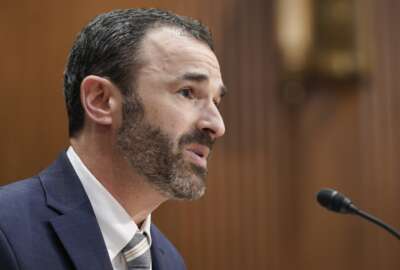Workplace Reimagined 2024: ODNI’s Cynthia Snyder on tackling IC skills gaps
Intelligence Community grapples with rapid changes in technology and world events as it modernizes recruiting practices to fill urgent skills and talent gaps.
Leaders in the Intelligence Community are about to get a much better idea of what kind of skills gaps exist across the 18 U.S. intelligence agencies.
Every year, each intelligence agency assesses its own personnel needs and gaps as part of a workforce shaping strategy. This fall, for the first time, the Office of the Director of National Intelligence will evaluate the workforce strategies across all 18 agencies.
Cynthia Snyder, assistant director of national intelligence for human capital, said the evaluation will help address skills gaps across the IC at a time when changes in technology and world events seem to be accelerating.
“We’re looking at where the elements will come in, and they will brief their strategies, what their skill gaps are, and we will look at that across the community to see what we can do to leverage the vehicles we have in place,” Snyder said during Federal News Network’s Workplace Reimagined Exchange 2024.
ODNI helps run several communities of practice in areas like training and recruitment. Snyder said leaders will use those groups to help address skills gaps where applicable.
The IC Center of Academic Excellence, meanwhile, will help recruit from universities, including minority serving institutions outside of the Washington, D.C., region.
“We have so much untapped talent that we’re continuing to try to leverage,” Snyder said.
Her team is also working with the Office of Personnel Management on a new initiative, the IC Talent Acquisition Solution. The program gives intelligence agencies access to OPM’s automated human resources capabilities. That includes USAJobs.com, where intelligence agencies are now posting their openings for the first time.
“We’ve seen an increase in the number of applications for our positions as well since we’ve been advertising there,” Snyder said. “So there’s been a number of tremendous benefits of what we’re trying to do to increase the visibility outside of the Washington metropolitan area and also being able to attract those individuals to the IC.”
Expanding virtual Intelligence Community recruiting capabilities
Further bolstering those efforts is the adoption of online recruiting tools, such as virtual interviews. First introduced at the height of the pandemic, Snyder said the tools are now commonplace across intelligence agencies. She added they are helping the IC accelerate its typical slow hiring process.
“The bottom line: We don’t have to bring someone in to interview now,” Snyder said. “It can be done virtually. When we are scheduling events, hiring events, in any state, we can use one of the tools to coordinate that with the schools and hire and basically have hiring events right there online where individuals will submit their resumes. We provide them to the respective offices, and then they can select the individuals that meet the criteria to offer interviews online.”
She described these new virtual tactics as tremendous help in streamlining the process. It also is a better experience for applicants. “You don’t always have to wait until you submit your resume and wait for several months to see if you make it through the process,” Snyder added.
ODNI is also working to integrate innovative technologies, like artificial intelligence, into human capital processes.
Snyder said officials are considering how to use robotic process automation to help sort through job applications.
“Screening those applications is one of the areas that we’re looking at and maybe testing in the coming months,” she said. “Before we can truly test it, we have to have the data. And so again, the more data that we’re able to have access to will certainly increase the accuracy of the models that are developed.”
Reducing security clearance timelines to speed IC onboarding
But intelligence agencies still face a longstanding hurdle in recruiting new talent: the background investigation process needed to grant a new hire a security clearance.
While timelines have come down in recent years, it can still take many months or more than a year, in some cases, to grant a top-secret security clearance.
But Snyder said the White House-led Trusted Workforce 2.0 initiative aimed at streamlining the personnel vetting process has already led to improvements. The introduction of continuous evaluation, which uses automated records checks to pull data on cleared individuals, has helped investigators focus their resources on new hires.
The Biden administration has set a new time-to-hire goal of 180 days for intelligence agencies. Snyder said reaching that mark could boost the IC’s recruiting efforts, especially among college graduates.
ODNI is additionally working to integrate data across the human capital, security and medical suitability processes. The hope is to give both hiring managers and applicants, in some cases, a better idea of where they stand in the process.
“Everyone will know where each applicant is in every phase of the process, and having some type of applicant flow, a notification to security, to human capital, and possibly to the individual, if we have it on the low side, so they will know where they are in the process,” Snyder said.
Discover more articles and videos now on Federal News Network’s Workplace Reimagined Exchange 2024 event page.
Copyright © 2025 Federal News Network. All rights reserved. This website is not intended for users located within the European Economic Area.
Follow @jdoubledayWFED






